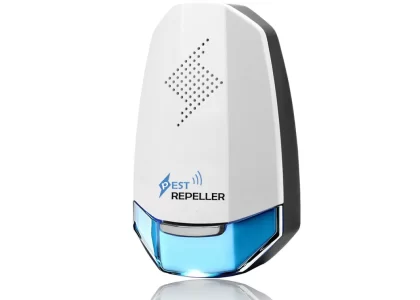 Introduction:
Introduction:
Front-loading washing machines have gained popularity in recent years due to their energy efficiency, water-saving capabilities, and gentle treatment of clothes. While these machines offer numerous benefits, it is important to consider disadvantages of front loading washing machine as well. In this comprehensive guide, we will explore the potential drawbacks of front-loading washing machines of 2024, helping you make an informed decision when choosing the right washing machine for your needs.
Higher Initial Cost
Price Point:
Front-loading washing machines are generally more expensive upfront compared to top-loading machines.
The advanced features and technology used in front-loading machines contribute to their higher cost.
Installation and Accessibility:
The installation of front-loading machines often requires professional assistance, which can add to the initial expense.
Additionally, front-loading machines may be more challenging to install in spaces with limited access or tight corners.
 Difficulty in Adding Laundry Mid-Cycle
Difficulty in Adding Laundry Mid-Cycle
Inability to Add Forgotten Items:
Once a front-loading washing machine starts its cycle, it is usually difficult to add any forgotten items.
The door remains locked for safety reasons, preventing users from adding or removing laundry during operation.
Interrupted Cycle:
To add or remove clothes mid-cycle, users may need to pause or cancel the current washing program.
This interruption can lead to less efficient cleaning and potentially affect the overall washing performance.
Potential for Odor and Mold
Water Retention:
Front-loading machines are susceptible to retaining water in their rubber gaskets and inner drum.
If the machine is not properly maintained and kept dry, this moisture can create an environment for mold and unpleasant odors to develop.
Regular Cleaning Required:
To prevent odor and mold, front-loading machines require regular cleaning and maintenance.
Cleaning the gaskets, drum, and dispensers is necessary to remove any build-up and ensure a hygienic washing environment.
Vibration and Noise
Vibration:
Front-loading machines may produce more vibration during the spin cycle compared to top-loading machines.
This can be attributed to the high speed at which the motor rotates in front-loading machines.
Noise:
The spinning motion and higher motor speed of front-loading machines can result in increased noise levels.
This noise can be bothersome, especially in smaller living spaces or during nighttime washing.
Ergonomics and Accessibility
Bending and Stooping:
Front-loading machines require users to bend down to load and unload laundry.
This can be inconvenient for individuals with limited mobility, back problems, or those who find it difficult to bend down consistently.
Accessibility for Small Items:
Retrieving small items, such as socks or handkerchiefs, from the bottom of the drum in a front-loading machine can be challenging.
These small items may get trapped underneath larger garments, necessitating extra effort and time to locate and retrieve them.
 Here’s a general overview of how front-loading washing machines operate:
Here’s a general overview of how front-loading washing machines operate:
Front-loading washing machines work through a series of steps that involve water, detergent, and mechanical action. Here’s a general overview of how front-loading washing machines operate:
Loading the Laundry:
Open the front door of the washing machine and load the laundry into the drum. Be mindful not to overload the machine to ensure optimal cleaning and spinning.
Adding Detergent:
Measure the appropriate amount of detergent as per the instructions on the detergent packaging. Add it to the detergent dispenser or directly into the drum, depending on the washing machine model.
Selecting the Wash Cycle:
Choose the desired wash cycle based on the type and condition of your laundry. Front-loading machines offer various wash cycles such as regular, delicate, quick wash, or specific cycles for different fabric types.
Adjusting Additional Settings:
Some front-loading machines allow you to adjust additional settings like water temperature, spin speed, rinse options, or pre-wash settings. Customize these settings according to your laundry requirements.
Initiating the Cycle:
Close the door and press the start button to begin the washing cycle. The machine will fill the drum with the appropriate amount of water based on the selected settings.
Washing and Agitating:
Front-loading machines use a horizontal drum that rotates on a horizontal axis. The drum will start to rotate, causing the laundry to tumble and agitate with the detergent and water mixture. This action helps loosen dirt, stains, and residues from the clothes.
Draining the Water:
After the washing and agitation process, the machine will drain the soapy water from the drum. This is typically done through a drainage pump connected to a drain hose that expels the water into a designated drain or sink.
Rinsing: Front-loading machines typically have multiple rinse cycles to ensure thorough removal of detergent residues. The machine will refill the drum with clean water and repeat the tumbling action to rinse the clothes.
Spinning:
Once the rinse cycles are complete, the machine will initiate a high-speed spin cycle. This cycle helps remove excess water from the clothes by pressing them against the drum’s inner wall. The water is then expelled through drainage holes, and the clothes are spun dry.
Completing the Cycle:
Once the desired spin duration is reached or the clothes are optimally dried, the machine will stop. Open the door, remove the laundry, and transfer it to the dryer or hang it for drying.
These are the basic steps involved in the operation of front-loading washing machines. The exact functions and features may vary depending on the brand and model of the machine. Bending over to load and unload clothes can be a disadvantage of front load washing machines.
 To clean a front-loading washing machine:
To clean a front-loading washing machine:
To clean a front-loading washing machine, follow these steps:
Wipe Down the Drum and Door Seal: Use a damp cloth or sponge to wipe down the inside of the drum and the rubber door seal. This helps remove any residue or dirt buildup.
Clean the Detergent Dispenser:
Remove the detergent dispenser drawer, and wash it with warm, soapy water. Rinse it thoroughly and ensure that all compartments are clean and free of residue.
Run a Self-Clean Cycle:
Many front-loading machines have a self-clean cycle specifically designed to remove dirt, bacteria, and odor from the drum. Follow the manufacturer’s instructions to activate the self-clean cycle. If your machine doesn’t have this feature, move to the next step.
Vinegar Solution:
Mix equal parts white vinegar and water in a spray bottle. Spray the inside of the drum and the rubber door seal with the vinegar solution. Let it sit for a few minutes to allow the vinegar to break down any stubborn buildup.
Scrub the Drum:
Use a soft brush or sponge to scrub the drum, paying attention to any stained or dirty areas. Use the vinegar solution to aid in removing any residue.
Clean the Filter:
Locate the filter, usually at the bottom of the front of the machine. Unscrew the filter or loosen the cover and remove any lint or debris. Rinse the filter under running water and reinsert it back into the machine.
Rinse Cycle:
Run an empty rinse cycle with hot water to flush out any remaining residue or vinegar solution. This helps ensure that the machine is thoroughly cleaned and ready for use.
Drying:
After the cleaning process, leave the door open and allow the drum and interior surfaces to air dry. This helps prevent the growth of mold or mildew.
Some usage precautions for front-loading washing machines:
When using a front-loading washing machine, it’s important to keep a few things in mind to ensure safety and optimal performance. Here are some usage precautions for front-loading washing machines:
Read the Instruction Manual:
Familiarize yourself with the manufacturer’s instructions and recommendations for your specific front-loading washing machine model. The manual will provide important information regarding the machine’s features, settings, and maintenance requirements.
Load the Machine Correctly:
Distribute the laundry evenly inside the drum, ensuring not to overload the machine. Overloading can negatively impact the machine’s performance and may affect the cleanliness of the clothes. Follow the manufacturer’s guidelines regarding load capacity for optimal results.
Use the Right Detergent:
Use high-efficiency (HE) detergent specifically formulated for front-loading washing machines. Regular detergent creates excess suds, which can cause issues like poor cleaning, foul odors, and even damage to the machine. Follow the recommended detergent amount based on the load size and soil level.
Check for Small Items:
Before starting the wash cycle, check for any small objects, such as coins, buttons, or jewelry that may have been left in pockets. These items can cause damage to both the machine and the clothing.
Clean the Machine Regularly:
Front-loading washing machines are prone to mold and mildew growth due to the seals and moisture retention. Clean the machine regularly by running a maintenance cycle, or as advised by the manufacturer, using a specialized washing machine cleaner or a mixture of vinegar and baking soda. Also, keep the door ajar after use to allow proper air circulation and prevent mildew growth.
Properly Maintain the Seal:
Inspect the door seal regularly for any signs of wear, tears, or damage. Wipe down the seal after each use to remove any excess moisture or residue, preventing potential mold growth. If necessary, follow the manufacturer’s instructions for replacing the door seal.
Check for Leaks:
Watch out for any signs of water leakage around the machine. If you notice any leaks, immediately turn off the machine, unplug it, and contact a professional technician for assessment and repair.
Regularly Inspect Hoses and Connections:
Periodically check the hoses and connections to ensure they are secure and free from any kinks or damage. Replace any worn or damaged hoses or connections immediately to prevent leaks or other issues.
By following these precautions and properly maintaining your front-loading washing machine, you can ensure its longevity and optimal performance while keeping your clothes fresh and clean.
 Conclusion:
Conclusion:
While front-loading washing machines offer numerous benefits, such as energy efficiency and gentle clothes care, it is important to consider their potential disadvantages. Factors such as higher initial cost, difficulty in adding laundry mid-cycle, potential for odor and mold, vibration and noise, and ergonomic limitations should be weighed against the advantages when making a decision. By understanding and evaluating these drawbacks, you can make a well-informed choice that aligns with your specific needs and preferences.





